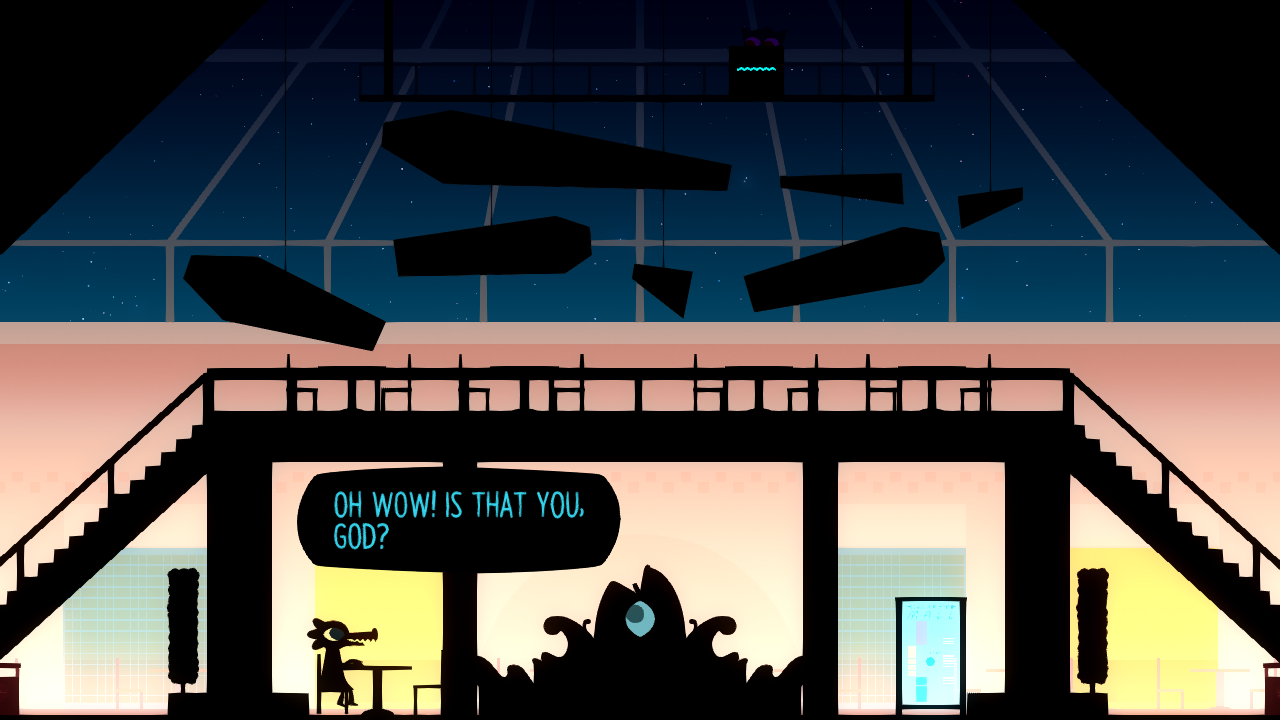I've been trying to write an article about Night in the Woods for quite some time, ever since I became enamored with the game when I saw its autumnally-decorated PlayStation booth at E3 in the summer of 2014. Earlier this year, Alec Holowka, Scott Benson, and Bethany Hockenberry (together known as Infinite Fall) showed off a second, slightly-more jarring trailer—and, just one month ago in late February, finished development and released the game.
In the three years between the original October 2013 Kickstarter and now, Infinite Fall released two smaller "supplemental games" which take place in the same universe as Night in the Woods (NITW). The first, Longest Night, a nostalgic dream of constellation-finding and storytelling around a campfire, and the second, Lost Constellation, a ghost story about an astronomer traveling through the woods of the Forest God, touch on themes similar to those of the full game. All of these games and stories come from a deep place and explore important and personal, yet oftentimes universal, topics. NITW looks at decaying towns and economic hardships, depression and mental health, growing up, making one's way through the world, and finding a purpose and meaning in life. It explores faith and belief, and having faith in people—and examines what that means.
There are many, many reasons why I love NITW—its stunning and inspiring writing, its sharp and poignant humor, its fantastic, funny, narratively-rich characters, its moving soundtrack—but when I tell people it's a good game, I'm appealing to that it will (and has) helped people and improved peoples' lives. The story of NITW and its style of presentation resonate with people deep down. It's something special, in that regard—beyond just the fact it took me from simultaneously crying with sadness and joy to laughing my head off in under two minutes.
NITW explores the complex themes of religion and faith in an interesting way. I'm not particularly religious myself, but I am interested in how religion can help us understand and make sense of our world, and how it can provide a sense of grounding and hope for many. Scenes and conversations involving these themes are abundant throughout the story—Mae's mom works at the Church of the First Coalescence in Possum Springs; Mae talks with whom she believes to be God in a dream; characters discuss the nature of gods, if one exists, and their beliefs or lack thereof.
